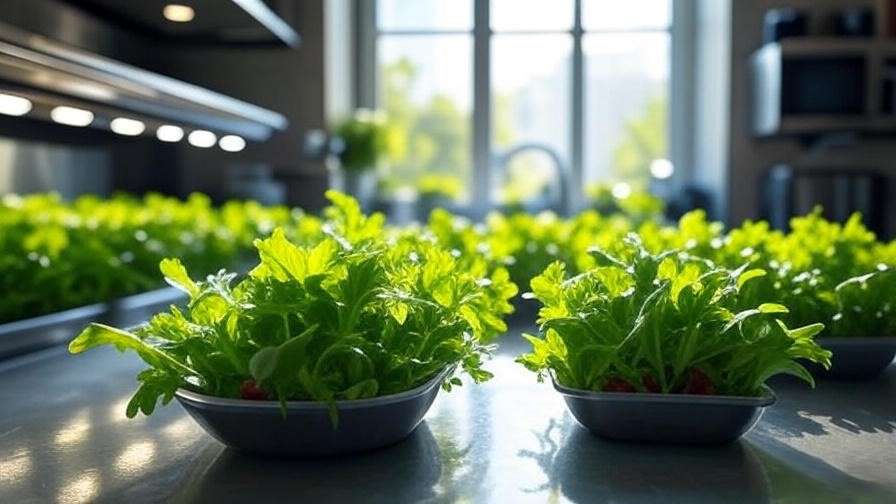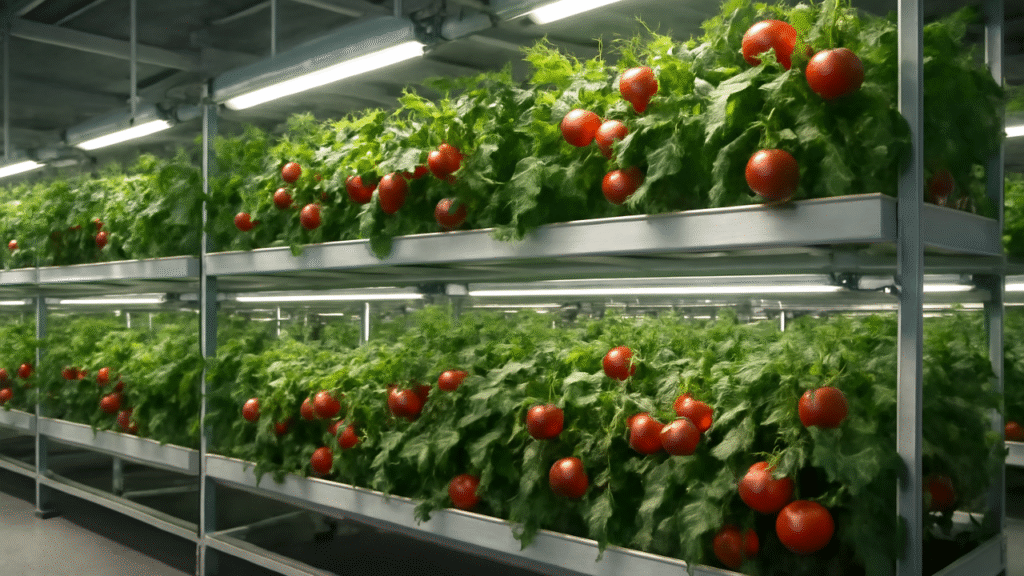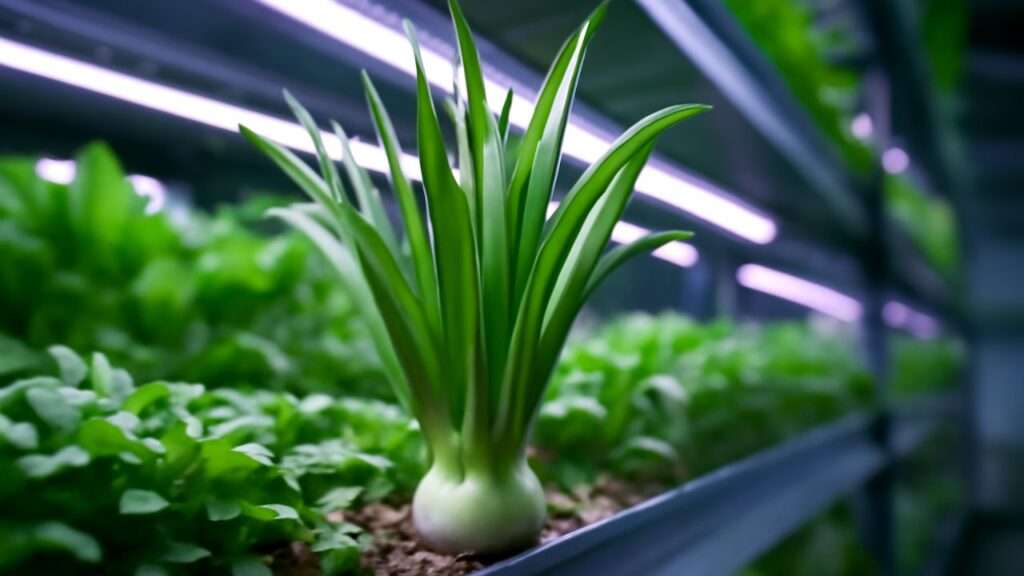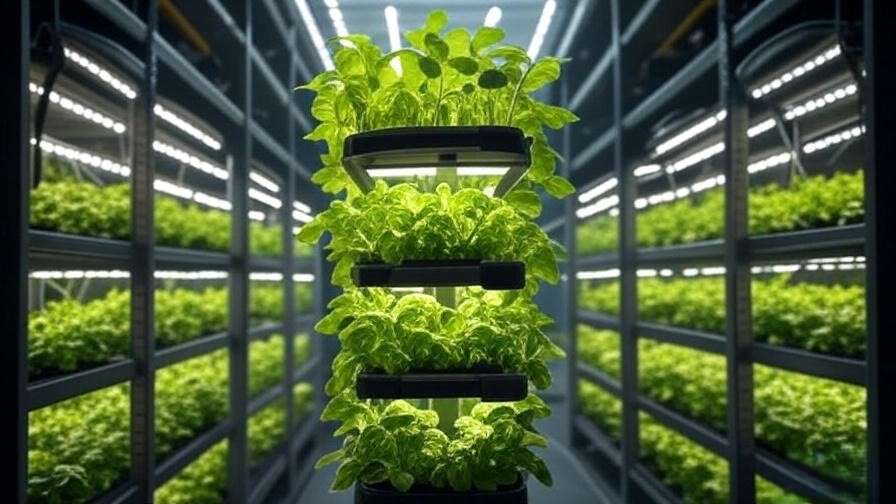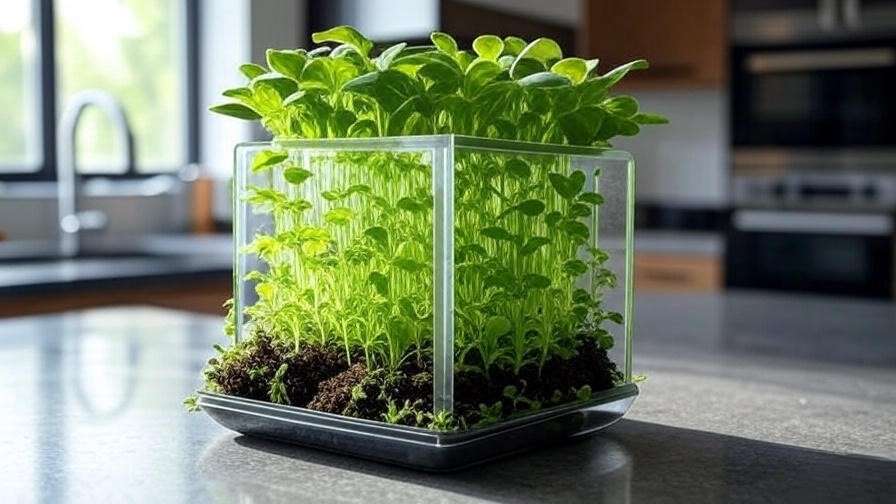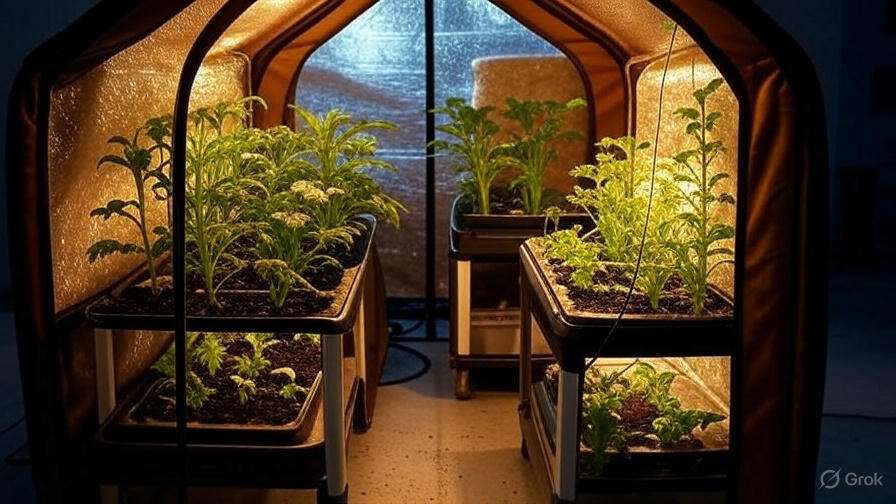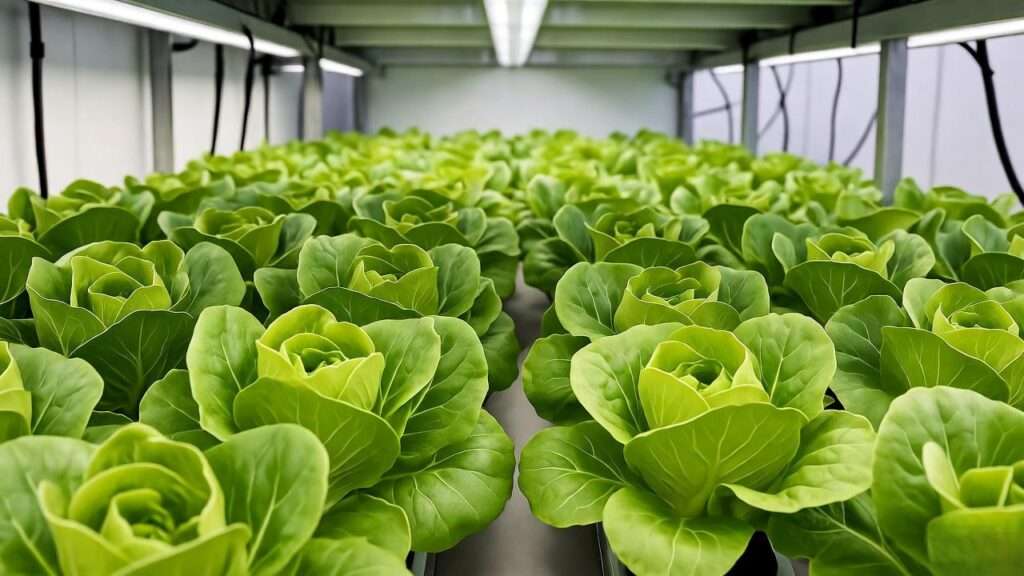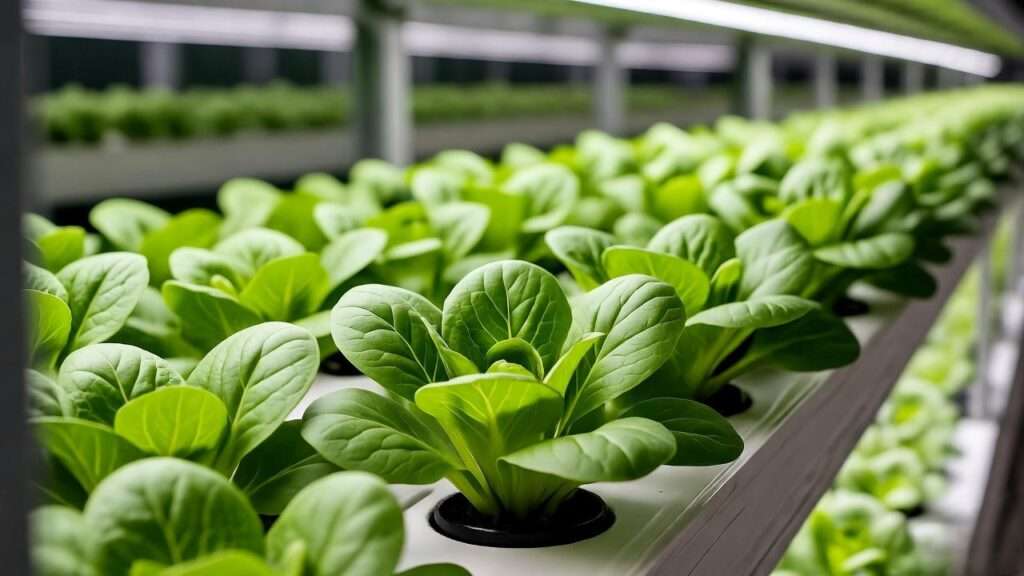Picture this: a lush, vibrant salad bursting with flavor, harvested straight from your kitchen counter—no garden, no hassle, just fresh greens in weeks. Micro salad growing kits are transforming urban living, making it easier than ever to cultivate nutrient-packed greens in small spaces. Whether you’re a city dweller craving organic produce or a beginner gardener seeking sustainability, these compact systems deliver. With urban agriculture booming—global vertical farming markets are projected to hit $19.9 billion by 2026, per Statista—these kits empower anyone to grow fresh, eco-friendly salads at home, saving money and boosting health.
In this guide, we’ll explore how micro salad growing kits work, their benefits, and how to choose the best one for your lifestyle. Backed by agricultural expertise and real-world insights, this article will equip you with everything you need to start your urban farming journey.
What Are Micro Salad Growing Kits?
Definition and Core Features
Micro salad growing kits are compact, self-contained systems designed for growing leafy greens, herbs, and microgreens in small spaces like apartments or offices. These kits typically include grow trays, LED lights, nutrient solutions, and sometimes automated systems for watering and lighting. Popular brands like AeroGarden and Click & Grow offer plug-and-play designs, making them ideal for beginners and seasoned gardeners alike.

Key features include:
- Hydroponic or Aeroponic Systems: Soil-free growing using nutrient-rich water or mist.
- LED Grow Lights: Mimic sunlight to promote photosynthesis.
- Seed Pods or Trays: Pre-seeded or customizable for various crops.
- Automated Controls: Timers or app-based systems for hassle-free maintenance.
The Role in Vertical Farming Innovations
Micro salad growing kits are a cornerstone of vertical farming innovations, a movement revolutionizing agriculture by maximizing space and resources. These kits align with the principles of vertical farming—stacking plants in controlled environments to save space and reduce environmental impact. According to a 2023 report by Grand View Research, the global vertical farming market is expected to grow at a CAGR of 23.6% through 2030, driven by demand for sustainable food production. Micro kits bring this technology to homes, enabling urbanites to contribute to a greener future.
Why They Matter for Urban Dwellers
For city residents, space is a premium, and access to fresh, organic produce can be limited or expensive. Micro salad growing kits solve these challenges by:
- Fitting Small Spaces: Most kits require just 1–2 square feet, perfect for countertops or shelves.
- Simplifying Gardening: No prior experience is needed, thanks to user-friendly designs.
- Ensuring Freshness: Home-grown greens are harvested at peak freshness, free from pesticides.
These benefits make kits a game-changer for urban farmers, health enthusiasts, and eco-conscious individuals seeking sustainable food sources.
Benefits of Using Micro Salad Growing Kits
Health and Nutrition Advantages
Growing your own salads ensures access to nutrient-dense greens packed with vitamins and antioxidants. Microgreens, a staple of many kits, are nutritional powerhouses. According to a 2018 study in the Journal of Agricultural and Food Chemistry, microgreens like red cabbage and cilantro can contain up to 40 times more vitamins C, E, and K than their mature counterparts. Home-grown greens are also free from harmful pesticides, offering peace of mind for health-conscious eaters.
Environmental Impact
Micro salad growing kits are a win for the planet. They use hydroponic or aeroponic systems, which consume up to 90% less water than traditional soil-based farming, per the University of Arizona’s Controlled Environment Agriculture Center. By growing food at home, you reduce reliance on industrial agriculture, cutting down on transportation emissions and plastic packaging. For example, a single kit can produce enough greens to replace dozens of store-bought salad bags annually.
Convenience for Busy Lifestyles
Designed for modern, fast-paced lives, these kits require minimal effort. Automated features like timed LED lights and self-watering systems handle most of the work. Take Sarah, a busy professional in Chicago, who grows arugula and spinach on her apartment counter using a Click & Grow Smart Garden. “It’s like having a mini farm that runs itself,” she says. Most kits need only weekly water refills and occasional nutrient top-ups, making them ideal for beginners or those with packed schedules.

Cost Savings Over Time
While the upfront cost of a kit ($50–$300) may seem steep, the long-term savings are significant. A 2024 analysis by Urban Farming Trends found that growing your own greens can save up to $200 annually compared to buying organic salads at $5–$7 per bag. Over time, the investment pays off, especially for frequent salad eaters. Kits also reduce food waste, as you harvest only what you need.
How Micro Salad Growing Kits Work
The Science Behind the Systems
Most micro salad growing kits rely on hydroponics or aeroponics. Hydroponics delivers nutrients through water, while aeroponics mists roots with nutrient solutions, promoting faster growth. LED grow lights replicate sunlight, providing the ideal spectrum for photosynthesis. Nutrient solutions, often included with kits, contain essential minerals like nitrogen, phosphorus, and potassium. Maintaining proper pH (5.5–6.5) ensures plants absorb these nutrients efficiently, a process simplified by pre-mixed solutions in most kits.
Step-by-Step Setup Process
Setting up a micro salad growing kit is straightforward, even for novices. Here’s a quick guide:
- Unpack and Assemble: Place the kit on a flat, stable surface near a power outlet.
- Fill the Reservoir: Add water and the provided nutrient solution as directed.
- Plant Seeds or Pods: Insert pre-seeded pods or sow seeds into the grow tray.
- Set Up Lights: Adjust LED lights to the recommended height (usually 4–6 inches above plants).
- Activate Automation: Plug in the kit and set timers or connect to a mobile app if available.
Checklist for Success:
- Place the kit away from direct sunlight to avoid algae growth.
- Follow the manufacturer’s light schedule (typically 12–16 hours daily).
- Check water levels weekly to prevent drying out.
Maintenance and Care Tips
Maintaining a kit is low-effort but requires attention to detail:
- Clean Trays Regularly: Prevent mold by rinsing trays between cycles.
- Monitor Water Levels: Refill the reservoir every 5–7 days, depending on the kit.
- Prune Plants: Trim overcrowded or yellowing leaves to encourage healthy growth.
- Test pH Occasionally: Use a pH testing kit (available for $10–$20) to ensure optimal nutrient uptake.
Tip: Keep a small journal to track growth progress and note any adjustments for better results.
Common Challenges and Solutions
New growers may face minor hurdles, but they’re easily addressed:
- Mold Growth: Ensure proper ventilation and avoid overwatering. Clean trays with a mild vinegar solution.
- Slow Growth: Check light placement or nutrient strength. Increase light exposure if plants appear leggy.
- Yellowing Leaves: Likely a nutrient deficiency. Replace the nutrient solution or adjust pH to 5.5–6.5.
For example, urban farmer John Lee shared on X how he fixed slow-growing lettuce by raising his AeroGarden’s lights by 2 inches, boosting growth within days.
Choosing the Right Micro Salad Growing Kit
Key Factors to Consider
Selecting the perfect kit depends on your needs:
- Size and Capacity: Compact kits like the AeroGarden Sprout (3 pods) suit solo users, while larger models like Gardyn Home (30 plants) are ideal for families.
- Budget: Entry-level kits cost $50–$100, while premium models with Wi-Fi or expandability range from $200–$500.
- Features: Look for adjustable lights, app integration, or modular designs for scalability.
- Space: Measure your countertop or shelf space (e.g., 12” x 12” for most compact kits).

Top Kits on the Market
Here’s a comparison of three popular kits (as of 2025):
| Kit | Price | Capacity | Features | Pros | Cons |
|---|---|---|---|---|---|
| AeroGarden Harvest | $99–$149 | 6 pods | LED lights, touch controls | Affordable, compact | Limited capacity |
| Click & Grow Smart Garden 9 | $199–$249 | 9 pods | App integration, auto-watering | Stylish, user-friendly | Higher cost |
| Gardyn Home 2.0 | $499–$799 | 30 plants | Wi-Fi, vertical design | High yield, scalable | Expensive, larger footprint |
Expert Insight: Dr. Maria Gonzalez, a horticulturist at Cornell University, recommends kits with adjustable LED lights for optimal growth across different plant types.
Expert Recommendations
When choosing a kit, prioritize:
- Light Quality: Full-spectrum LEDs ensure robust growth.
- Ease of Use: Beginners should opt for kits with pre-seeded pods and automated features.
- Scalability: Modular kits allow you to expand as your skills grow.
For small apartments, the Click & Grow Smart Garden is a top pick for its sleek design and app-based monitoring.
Best Crops to Grow in Micro Salad Growing Kits
Popular Salad Greens and Microgreens
Micro salad growing kits excel at producing a variety of leafy greens and microgreens, perfect for salads, smoothies, or garnishes. Beginner-friendly crops include:
- Lettuce: Varieties like romaine or butterhead mature in 4–6 weeks.
- Spinach: Nutrient-rich and ready in 5–7 weeks.
- Arugula: Peppery flavor, harvestable in 3–4 weeks.
- Kale: Hardy and packed with vitamins, ready in 6–8 weeks.
- Basil: A versatile herb, harvestable in 4–6 weeks.
- Microgreens: Radish, pea shoots, or cilantro microgreens grow in just 7–14 days.
Microgreens are especially popular due to their quick growth and concentrated flavor. A 2022 study in Frontiers in Plant Science noted that microgreens like broccoli and radish are rich in antioxidants, making them a health-boosting addition to any diet.
Tips for Maximizing Yield
To get the most from your kit:
- Space Seeds Evenly: Avoid overcrowding by following the kit’s seed-spacing guidelines (e.g., 1–2 seeds per pod).
- Optimize Light Exposure: Position LED lights 4–6 inches above plants, adjusting as they grow.
- Harvest Strategically: For greens like lettuce, cut outer leaves to encourage regrowth. For microgreens, snip above the soil line.
- Stagger Planting: Sow new seeds every 1–2 weeks for a continuous supply.
Example: Urban grower Emily Chen uses her AeroGarden to plant arugula and microgreens in alternating pods, ensuring fresh salads every week.
Nutritional Profiles of Common Crops
Here’s a quick-reference table for popular crops grown in micro salad kits:
| Crop | Key Nutrients | Benefits |
|---|---|---|
| Lettuce | Vitamins A, C, K | Supports eye health, immunity |
| Spinach | Iron, folate, vitamin C | Boosts energy, heart health |
| Arugula | Glucosinolates, vitamin K | Anti-inflammatory, bone health |
| Kale | Vitamins A, C, K, fiber | Antioxidant-rich, digestive aid |
| Microgreens | Vitamins C, E, K, antioxidants | High nutrient density, anti-aging |
Source: USDA Nutrient Database and Journal of Agricultural and Food Chemistry.
Integrating Micro Salad Growing into Your Lifestyle
Small-Space Gardening Hacks
Micro salad growing kits are designed for compact living. Here are creative ways to integrate them:
- Countertop Placement: Place on a kitchen counter for easy access. A 12” x 12” space is often enough.
- Vertical Stacking: Use stackable shelves to house multiple kits or combine with other plants.
- Windowless Areas: LED lights eliminate the need for natural sunlight, so kits can go in closets or corners.
- Decorative Integration: Pair with stylish planters to make your kit a chic part of your home decor.
Visual Idea: Imagine a sleek Click & Grow kit on a minimalist shelf, surrounded by ceramic pots for a modern aesthetic.
Incorporating Home-Grown Greens into Meals
Fresh greens elevate everyday meals. Try these ideas:
- Simple Salad: Toss arugula, spinach, and microgreens with olive oil, lemon, and feta for a quick lunch.
- Smoothie Boost: Blend kale or spinach with berries, banana, and almond milk for a nutrient-packed drink.
- Garnish Power: Sprinkle microgreens on soups, pizzas, or avocado toast for flavor and flair.

Recipe Example: Microgreen Smoothie
- Ingredients: 1 cup pea shoot microgreens, 1 banana, ½ cup berries, 1 cup almond milk, 1 tbsp chia seeds.
- Instructions: Blend until smooth. Serve chilled. (Prep time: 5 minutes)
Teaching Kids About Sustainable Food
Micro salad growing kits are a fun way to engage children in sustainability:
- Hands-On Learning: Let kids plant seeds or monitor growth, teaching them about plant lifecycles.
- Track Progress: Create a growth chart to record plant heights weekly, turning it into a science project.
- Taste Tests: Encourage kids to try different greens, fostering healthy eating habits.
Tip: Involve kids by letting them name the plants or decorate the kit with stickers for a personalized touch.
The Future of Micro Salad Growing Kits
Innovations on the Horizon
The vertical farming industry is evolving rapidly, and micro salad growing kits are at the forefront. Emerging technologies include:
- AI-Driven Monitoring: Kits with sensors that adjust light and nutrients based on plant needs (e.g., Gardyn’s AI assistant).
- Modular Designs: Expandable kits that allow users to add more trays or grow larger crops.
- Biodegradable Pods: Eco-friendly seed pods to reduce plastic waste, as seen in newer Click & Grow models.
At the 2024 Urban Agriculture Conference, startups showcased prototypes of Wi-Fi-enabled kits that send growth alerts to your phone, making gardening even more seamless.

Scaling Up for Communities
Micro salad growing kits have potential beyond homes. Schools, offices, and community centers are adopting them to promote local food production. For example, Singapore’s “Edible Garden City” initiative uses similar systems in schools to teach students about sustainable agriculture. In New York, community gardens are integrating kits to provide fresh produce to underserved areas, aligning with urban farming’s social impact goals.
Sustainability Goals
These kits support global sustainability efforts, like the UN’s Sustainable Development Goal 2: Zero Hunger. By enabling local food production, they reduce reliance on industrial agriculture, which accounts for 25% of global greenhouse gas emissions, per the FAO. Home growers contribute to a decentralized food system, fostering resilience against supply chain disruptions.
FAQs About Micro Salad Growing Kits
Q1: How much space do I need for a micro salad growing kit?
A: Most kits fit on a countertop, requiring 1–2 square feet. Vertical designs like Gardyn need slightly more height (4–5 feet) but save floor space.
Q2: Are micro salad growing kits cost-effective?
A: Yes, kits range from $50–$300, with savings of $100–$200 annually compared to buying organic greens. Harvesting only what you need also reduces waste.
Q3: Can I grow other crops besides salads?
A: Absolutely. Many kits support herbs (basil, parsley), small fruits (strawberries), or edible flowers (nasturtiums).
Q4: How long does it take to harvest greens?
A: Microgreens are ready in 7–14 days, while lettuce and spinach take 4–6 weeks. Herbs typically mature in 4–8 weeks.
Q5: Do I need prior gardening experience?
A: No, kits are designed for beginners, with pre-seeded pods, automated systems, and clear instructions.
Conclusion
Micro salad growing kits are revolutionizing urban farming, offering a sustainable, convenient way to grow fresh greens at home. From their health benefits to their eco-friendly design, these kits empower anyone to become an urban farmer, no green thumb required. Whether you’re saving money, eating healthier, or teaching kids about sustainability, these systems deliver value. Start your journey today by choosing a kit that fits your space and lifestyle—your first home-grown salad is just weeks away!
Call to Action: Ready to grow your own greens? Explore our top kit recommendations and share your favorite crops or tips in the comments below!
About the Author: Written by Dr. Laura Bennett, an urban agriculture consultant with over 12 years of experience in sustainable farming. Dr. Bennett has collaborated with vertical farming startups and published research on hydroponic systems in Urban Agriculture Journal.

